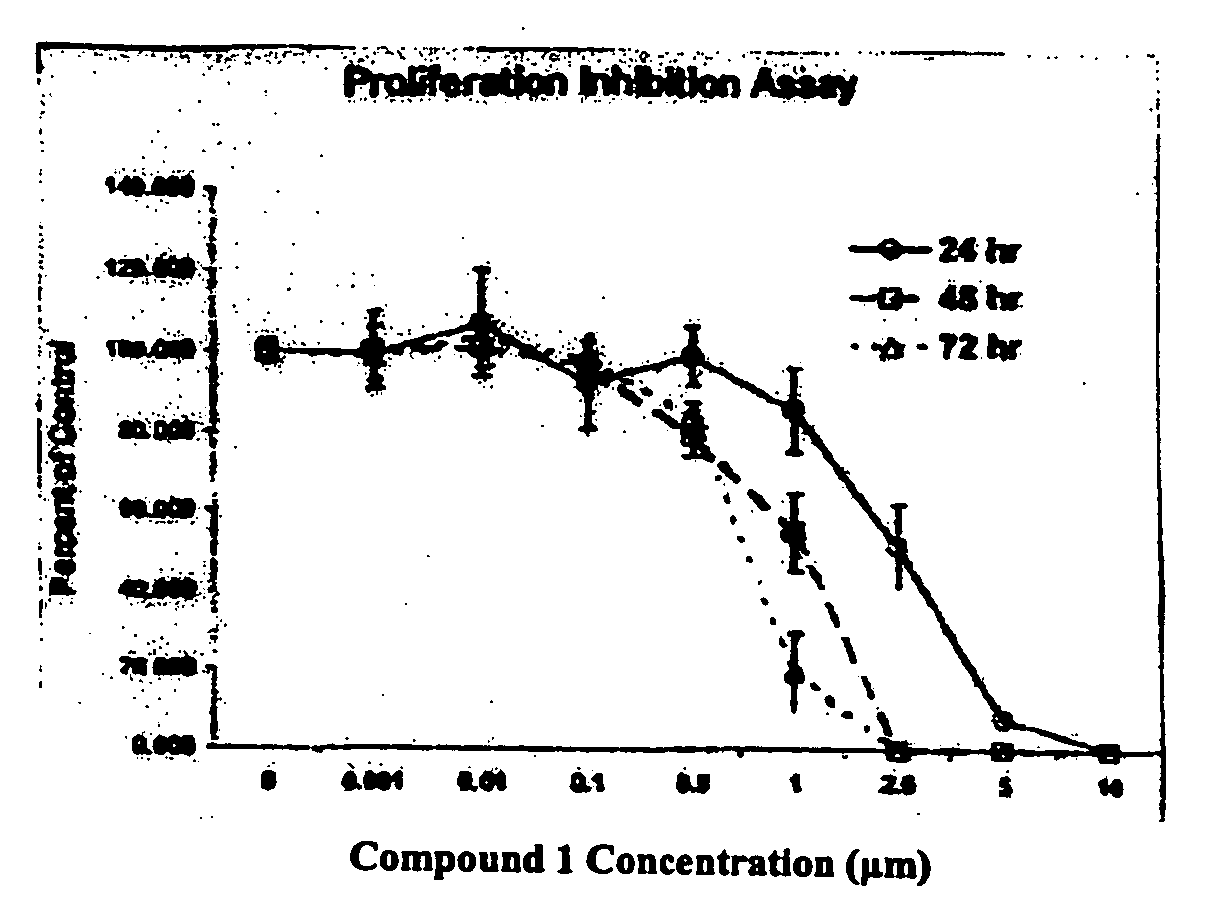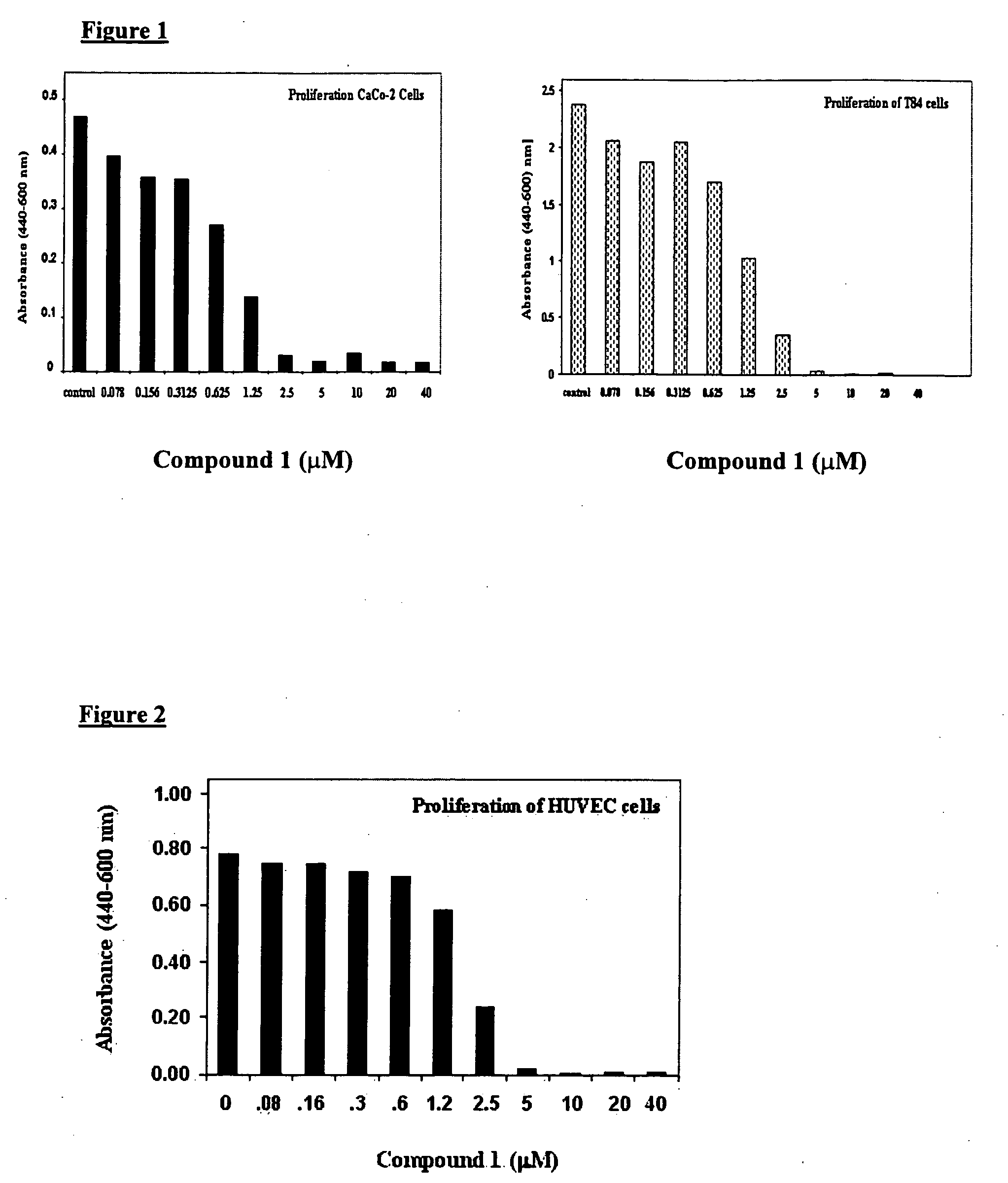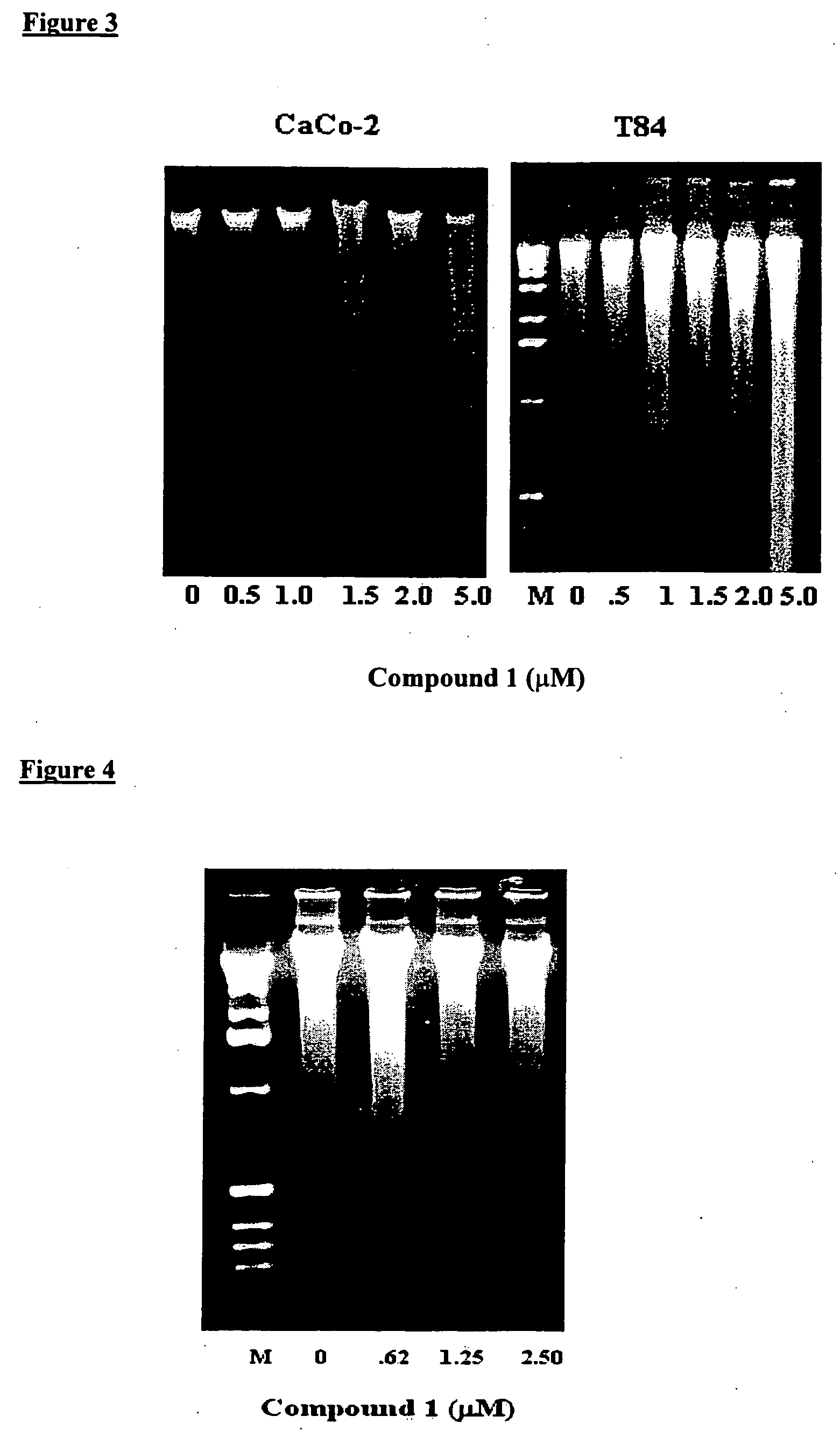Method of treating cancer with azaspirane compositions
a technology of azaspirane and composition, which is applied in the field of cancer treatment with azaspirane composition, can solve the problems of increasing the concentration of angiogenic signals, destroying normal cells, and cancer is a major cause of death in animals and humans, and achieves the effects of inhibiting the secretion of vegf, inhibiting the proliferation of cancer cells, and accelerating the rate of apoptosis in cancer cells
- Summary
- Abstract
- Description
- Claims
- Application Information
AI Technical Summary
Benefits of technology
Problems solved by technology
Method used
Image
Examples
example 1
Inhibition of T84 and CaCo-2 Colon Carcinoma Cell Proliferation
[0085] The effect of N,N,-diethyl-8,8-dipropyl-2-azaspiro[4,5]decane-2-propanamine dimaleate (Compound 1) on proliferation of human colon carcinoma cells T84 and CaCo-2 was evaluated in the following manner. Cell proliferation was measured by WST-1 dye conversion to Formazan assay using the proliferation kit from BioVision, CA. The procedure used was essentially as described in the manufacture's instructions. Briefly, cells were grown for 7 days until they formed semi-confluent monolayers. On day 7, cells were trypsinized and resuspended in 96-well plates at a concentration of approximately 40,000 cells / well and allowed to grow for 24 hours at 37° C.
[0086] Subsequently, fresh media containing increasing concentrations of Compound 1, as indicated in the FIG. 1, were added and assay plates were further incubated for an additional period of 24 hours. A solution of 5 μl of WST-1 dye per well was added and plates were read ...
example 2
Inhibition of Human Umbilical Vein Endothelial Cell (HUVEC) Proliferation
[0088] Endothelial cell proliferation, migration and apoptosis are essential components of the angiogenic process. Hence, we evaluated the effect of N,N,-diethyl-8,8-dipropyl-2-azaspiro[4,5]decane-2-propanamine dimaleate (Compound 1) on proliferation and apoptosis of HUVEC cells using the same procedures as described for T84 and CaCo-2 cells in Example 1.
[0089] As shown in FIG. 2, Compound I inhibited proliferation of HUVEC with an IC50 value in the range of 1.25 to 2.5 μM.
example 3
Induction of Apoptosis in CaCo-2, T84 and HUVEC Cells
[0090] T84, CaCo-2 and HUVEC cells, respectively, were grown in 100 mm dishes for 7-9 days, culture media for HUVEC was EGM-2 (Clonetics, BioWhitaker Co.), until they reached semi-confluency. Cell monolayers were then treated for 12 hours (CaCo-2 and T84) and 16 hours (HUVEC), respectively, at the indicated concentrations of N,N,-diethyl-8,8-dipropyl-2-azaspiro[4,5]decane-2-propanamine dimaleate (Compound 1) in culture media. Cells were collected by trypsinization and the apoptotic DNA was isolated from these cells following the instructions of the DNA fragmentation analysis kit (Boehringer Mannheim Corp., Indianapolis, Ind.). The apoptotic DNA was evaluated using 1.5% agarose gel electrophoresis followed by staining with ethidium bromide. M denotes the lane containing molecular weight markers of DNA.
[0091] As shown in FIG. 3, treatment of CaCo-2 and T84 cells, respectively, with Compound 1 resulted in formation of DNA laddering...
PUM
| Property | Measurement | Unit |
|---|---|---|
| pH | aaaaa | aaaaa |
| concentration | aaaaa | aaaaa |
| Vascular permeability | aaaaa | aaaaa |
Abstract
Description
Claims
Application Information
 Login to View More
Login to View More - R&D
- Intellectual Property
- Life Sciences
- Materials
- Tech Scout
- Unparalleled Data Quality
- Higher Quality Content
- 60% Fewer Hallucinations
Browse by: Latest US Patents, China's latest patents, Technical Efficacy Thesaurus, Application Domain, Technology Topic, Popular Technical Reports.
© 2025 PatSnap. All rights reserved.Legal|Privacy policy|Modern Slavery Act Transparency Statement|Sitemap|About US| Contact US: help@patsnap.com



